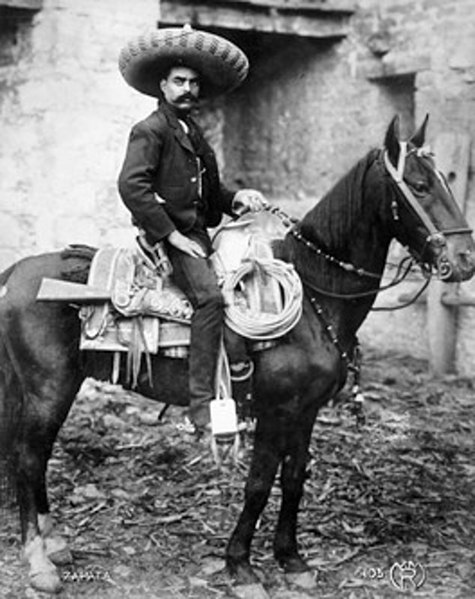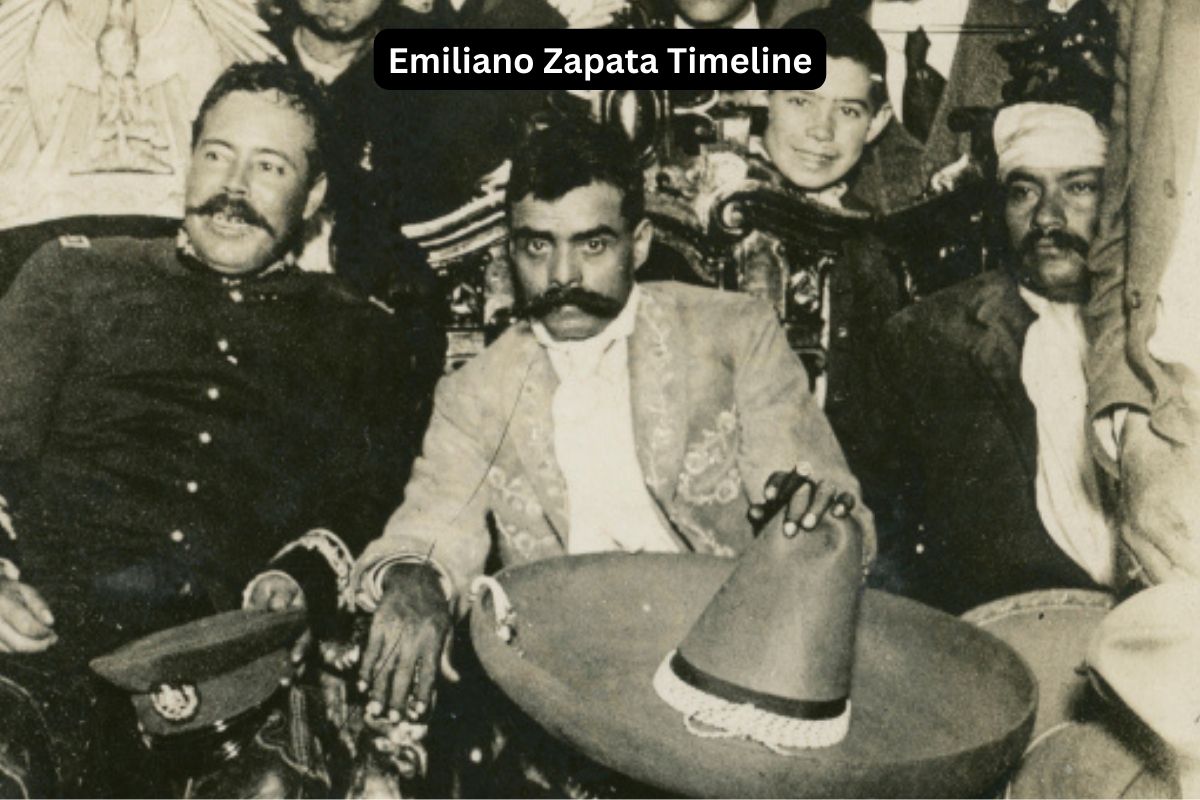Born on August 8, 1879, in Anenecuilco, Morelos, Mexico, Emiliano Zapata rose from humble beginnings to become a pivotal figure in the Mexican Revolution.
This article explores his journey, from advocating for peasant and indigenous rights to leading the Liberation Army of the South with the rallying cry of “Tierra y Libertad” (Land and Liberty).
Despite facing betrayal and assassination in 1919, Zapata’s enduring legacy continues to inspire activism and reform efforts. Join us as we delve into the lasting impact of Emiliano Zapata, a beacon of hope for social justice.
| Date | Event |
|---|---|
| August 8, 1879 | Emiliano Zapata is born in Anenecuilco, Morelos, Mexico. |
| Early 1900s | Zapata becomes involved in local politics and agrarian activism, advocating for the rights of peasants and indigenous people in Morelos. |
| 1909 | He becomes involved with the Anti-Reelectionist movement, opposing the reelection of President Porfirio Díaz. |
| 1910 | The Mexican Revolution begins. Zapata becomes a leader of the Liberation Army of the South, fighting for land reform and the rights of peasants. |
| 1911 | Zapata publishes the Plan de Ayala, a manifesto demanding land reform and the redistribution of land to peasants. |
| 1913 | President Francisco I. Madero is assassinated, leading to further unrest and violence in Mexico. |
| 1914 | Zapata’s forces take control of Cuernavaca, the capital of Morelos. |
| 1916 | Zapata’s forces clash with those of General Venustiano Carranza, who becomes president after the fall of Victoriano Huerta. The conflict intensifies between the Zapatistas and Carrancistas. |
| 1919 | Zapata is betrayed and assassinated in Chinameca, Morelos, by government forces under the orders of General Pablo González. |
| After 1919 | Zapata’s legacy continues to inspire agrarian and social movements in Mexico. He remains an iconic figure in Mexican history, particularly revered for his advocacy for land reform and the rights of peasants. |
Timeline of Emiliano Zapata
August 8, 1879: Emiliano Zapata is born in Anenecuilco, Morelos, Mexico
Emiliano Zapata is born in Anenecuilco, Morelos, Mexico. He was born into a family of mestizo (mixed indigenous and Spanish) heritage.
Growing up in a rural farming community, Zapata witnessed firsthand the injustices faced by peasants and indigenous people, which would later fuel his activism.

Early 1900s: Zapata becomes involved in local politics and agrarian activism, advocating for the rights of peasants and indigenous people in Morelos
Zapata becomes involved in local politics and agrarian activism. Inspired by the struggles of the peasants in Morelos, he starts organizing with local communities to address issues such as land distribution, labor rights, and access to resources.
Zapata’s early involvement in activism lays the groundwork for his leadership role in the Mexican Revolution.
1909: He becomes involved with the Anti-Reelectionist movement, opposing the reelection of President Porfirio Díaz
Zapata joins the Anti-Reelectionist movement, which opposed the long-standing rule of President Porfirio Díaz and his tendency to seek reelection continuously.
Also Read: Facts About Emiliano Zapata
The movement aimed to bring about political change and end the dictatorship-like rule of Díaz, who had been in power since 1876.
Zapata’s participation in this movement reflects his growing discontent with the socio-political conditions in Mexico and his commitment to advocating for social justice and reform.
1910: The Mexican Revolution begins. Zapata becomes a leader of the Liberation Army of the South, fighting for land reform and the rights of peasants
The Mexican Revolution begins. Emiliano Zapata quickly emerges as a prominent leader in the southern state of Morelos.
He forms the Liberation Army of the South, also known as the Zapatistas, with the primary goal of reclaiming land taken from indigenous communities and redistributing it among the peasants.
Zapata’s army adopts the slogan “Tierra y Libertad” (Land and Liberty) as its rallying cry, emphasizing the demand for agrarian reform and social justice.

1911: Zapata publishes the Plan de Ayala, a manifesto demanding land reform and the redistribution of land to peasants
Zapata publishes the Plan de Ayala, a revolutionary manifesto outlining his vision for land reform and political change. The plan calls for the expropriation of land held by wealthy landowners and its redistribution to the peasants who work it.
Also Read: Pancho Villa Facts
Additionally, it rejects the government of President Francisco I. Madero, accusing him of failing to fulfill the promises of the revolution. The Plan de Ayala becomes a rallying point for Zapata’s supporters and solidifies his position as a leader of the agrarian movement.
1913: President Francisco I. Madero is assassinated, leading to further unrest and violence in Mexico
President Francisco I. Madero is assassinated in a coup d’état led by General Victoriano Huerta. The assassination triggers widespread unrest and violence throughout Mexico as various factions vie for power.
Zapata’s forces continue to fight for land reform and autonomy in Morelos, resisting attempts by the new government to suppress their movement. The assassination of Madero further radicalizes Zapata and reinforces his commitment to the revolutionary cause.
1914: Zapata’s forces take control of Cuernavaca, the capital of Morelos
Zapata’s forces achieve a significant victory by capturing Cuernavaca, the capital of Morelos. This success strengthens Zapata’s position as a revolutionary leader and provides a base of operations for further resistance against the central government.
However, despite territorial gains, the Zapatistas face ongoing conflicts with rival factions and the federal army as the revolution continues to unfold.

1916: Zapata’s forces clash with those of General Venustiano Carranza, who becomes president after the fall of Victoriano Huerta
Tensions escalate between Zapata’s forces and those loyal to General Venustiano Carranza, who emerges as a key figure in the revolutionary struggle.
Carranza’s faction, known as the Constitutionalists, seeks to establish a new government and implement reforms, but their vision conflicts with Zapata’s demands for agrarian redistribution and autonomy for the peasants.
Clashes between the Zapatistas and Carrancistas intensify, leading to protracted warfare and instability in the region.
1919: Zapata is betrayed and assassinated in Chinameca, Morelos, by government forces under the orders of General Pablo González
Emiliano Zapata is betrayed and assassinated in Chinameca, Morelos, by government forces under the command of General Pablo González. Zapata’s death is a significant blow to the revolutionary movement, depriving it of one of its most charismatic and influential leaders.
His assassination marks the end of an era for the Zapatistas and highlights the ruthlessness of the government’s efforts to suppress dissent. Despite Zapata’s death, his legacy continues to inspire resistance and activism in Mexico, symbolizing the ongoing struggle for social justice and agrarian reform.
After 1919: Zapata’s legacy continues to inspire agrarian and social movements in Mexico
Zapata’s legacy endures long after his death, serving as a symbol of resistance and empowerment for marginalized communities in Mexico.
His advocacy for land reform and the rights of peasants resonates with subsequent generations of activists and revolutionaries, inspiring numerous agrarian and social movements throughout the country’s history.
Zapata’s image and ideals remain iconic in Mexican culture, celebrated in art, literature, and popular consciousness as a champion of the oppressed and a symbol of the ongoing quest for justice and equality.
